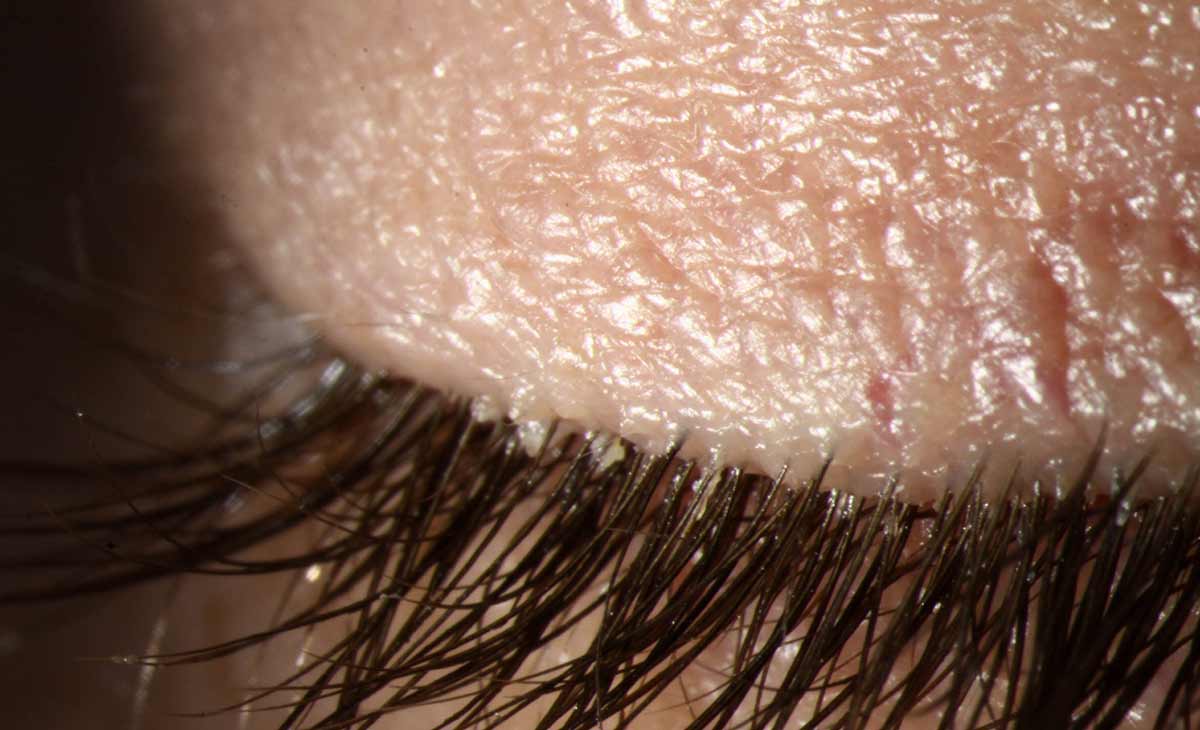 |
| In this observational extension study, no serious ocular adverse events occurred through one year of follow-up in patients treated for Demodex blepharitis with a six-week course of lotilaner ophthalmic solution 0.25% (XDemvy, Tarsus). Photo: Chris Sindt, OD. Click image to enlarge. |
Last summer in the US, the first prescription drop for Demodex blepharitis was approved (XDemvy, lotilaner ophthalmic solution, 0.25%, Tarsus), providing a novel targeted treatment option for as many as 25 million US adults with the condition. The drug’s safety and efficacy were validated through two Phase III trials (Saturn-1 and Saturn-2) including 833 patients. However, since the observation periods were not long enough to evaluate long-term safety, researchers recently performed an extension of Saturn-1 involving a subset of patients who participated in that study. They explained in their paper, published last week in Cornea, “Extension studies allow for clinical trial participants to roll over into a second study and continue follow-up to assess any potential long-term consequences after the completion of the original clinical trial.”
The study was designed to assess ocular or systemic adverse events that occurred up to one year post-treatment with lotilaner ophthalmic solution 0.25%. Included were 128 patients with Demodex and 111 controls from the Saturn 1 trial.
At day 180 and day 365, the data showed that the proportion of patients with zero to two collarettes (grade 0) was significantly higher in the study group than in the control group (39.8% vs. 2.7% at day 180 and 23.5% vs. 2.9% at day 365). The proportion with 10 or fewer collarettes (grade 0-1) was also significantly higher in the study group than in the control group (70.3% vs. 18.0% at day 180 and 62.6% vs. 21.9% at day 365).
The data also showed that erythema continued to improve even after completion of the six-week lotilaner treatment; at day 180, 21.1% of patients in the study group achieved an erythema cure (grade 0), and at day 365, that percentage climbed to 28.7% (in the control group, these values were 6.3% and 14.3%, respectively).
Importantly, no serious ocular adverse events were observed in the study group. One treatment-related ocular adverse event (blurry vision) was reported but considered to be mild.
While the proportion of patients in the study group with zero to two collarettes decreased throughout the year post-treatment—from 44% at week 6 to 40% at day 180 and 24% at day 365—the researchers pointed out that a return of collarettes in some patients over time is expected. They explained in their paper, “It is possible that a relatively small number of mites escaped the acaricidal effect of lotilaner or that mites from other areas of the face or external locations reinfested the eyelash follicles.”
Overall, this study observed no long-term concerns in one year of follow-up in patients treated for Demodex blepharitis with a six-week course of lotilaner ophthalmic solution 0.25%. Additionally, compared to controls, more patients treated with lotilaner had collarette grade 0 or 1 at every time point in the study, which the researchers say could indicate a potentially durable effect of the drug that may last well after completion of therapy.
Sadri E, Paauw JD, Ciolino JB, et al. Long-term outcomes of 6-week treatment of lotilaner ophthalmic solution, 0.25%, for demodex blepharitis: a noninterventional extension study. Cornea. February 9, 2024. [Epub ahead of print]. |

